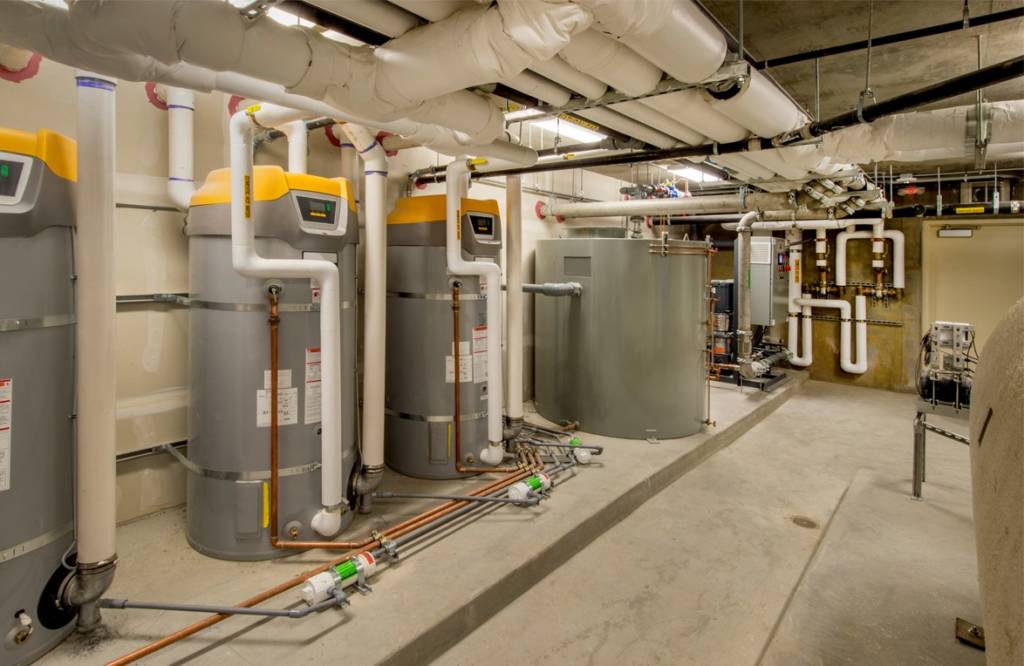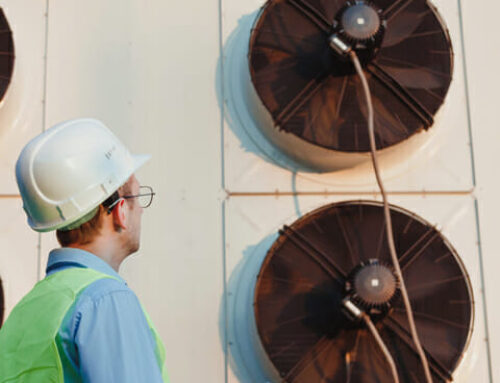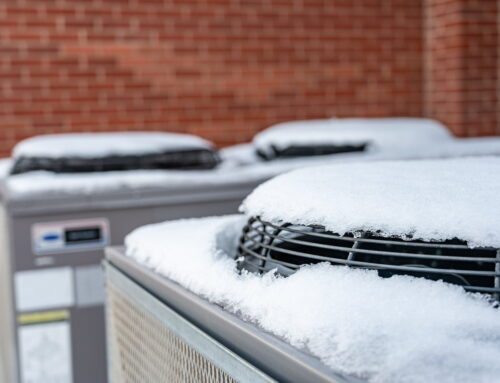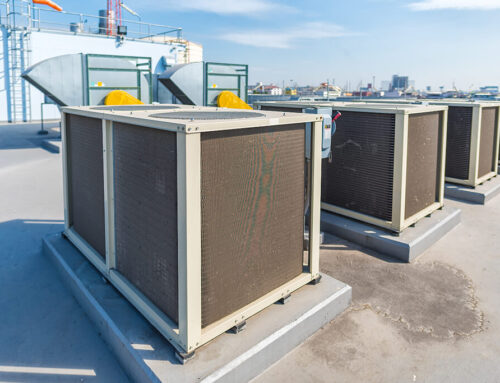Ever wonder what keeps those towering skyscrapers comfortable year-round? Building management employs effective HVAC systems for temperature control in high-rise buildings. It’s not just any HVAC system; it’s one meticulously designed with advanced control systems, temperature control, air circulation, and high-rise commercial buildings, specifically skyscrapers, in mind. Navigating the challenges of energy efficiency, occupant comfort, and the complexities of heating, ventilation, and air conditioning (HVAC) systems in skyscrapers is no small feat. From understanding airflow dynamics to accommodating varying climate impacts on different floors with an effective HVAC system, HVAC zones, and HVAC units, there’s a lot under the hood for efficiency. Let’s dive into the critical considerations, including HVAC zones and air quality in skyscrapers, that ensure these systems are efficient, cost-effective, and capable of providing comfort and efficiency to everyone inside.
Understanding HVAC Challenges in High-Rise Buildings
Temperature Zones
High-rise commercial buildings face unique challenges with their HVAC systems, including air quality and efficiency. One such challenge in high-rise buildings is the varied temperature zones from top to bottom. This happens due to the stack effect, where warm air rises and cool air sinks inside a building.
The top floors of high-rise buildings can get significantly warmer than the lower floors. Engineers must design HVAC systems for high-rise buildings that can adapt to these changes. They might use different settings for various floors or install more sophisticated equipment that adjusts automatically.
Wind Pressure
Wind pressure greatly impacts ventilation in tall buildings. The higher up you go, the stronger the wind pressure becomes. This can either help or hinder ventilation, depending on its direction and strength.
Buildings need well-designed vents and ducts that take wind pressure into account. Otherwise, it could lead to uneven heating or cooling across floors. Sometimes, architects include special features on building exteriors to manage this issue better.
Air Distribution
Balancing air distribution across multiple floors is another hurdle for high-rise buildings’ HVAC systems. It’s difficult because each floor has its own needs based on occupancy, sunlight exposure, and other factors.
To tackle this problem, engineers often divide buildings into sections or zones with independent controls. This allows for more precise management of temperatures throughout the building.
-
Use zoned systems
-
Install adjustable vents
-
Monitor airflow constantly
Components and System Design for High-Rise HVAC
VRF Systems
Variable Refrigerant Flow (VRF) systems offer flexibility in high-rise buildings. They adapt to different spaces and needs. This makes them ideal for complex structures with varying requirements.
VRF systems can heat or cool specific zones independently. This is crucial in tall buildings where sunlight exposure varies. It leads to energy efficiency and comfort across floors.
Scalable Solutions
Choosing scalable solutions is vital for future expansions. As businesses grow, so do their space requirements. A scalable system allows easy adjustments without major overhauls.
This approach saves time and money in the long run. It ensures that the HVAC system can handle additional load as the building evolves.
Digital Controls
Utilizing digital controls enhances temperature and airflow management. These systems provide precise control over indoor environments, ensuring comfort for all occupants.
Digital controls also enable remote monitoring and adjustments. This means issues can be identified and fixed quickly, often before users notice anything amiss.
Zoning and Energy Efficiency Strategies
Demand-Controlled Ventilation
Implementing demand-controlled ventilation is a smart move. It adjusts the air flow based on occupancy levels. This means less energy waste in low-use areas.
For example, conference rooms not always full can use less cooling or heating. Sensors detect room usage and adjust accordingly. This practice directly impacts energy consumption, making buildings more efficient.
High-Performance Insulation
Using high-performance insulation and glazing cuts down heat loss or gain. Buildings stay warmer in winter and cooler in summer without overworking HVAC systems.
Consider this: A building with poor insulation works harder to maintain temperature. That increases energy bills significantly. High-quality materials keep comfort high and costs low, crucial for large structures like high-rise commercial buildings.
LED Lighting Adoption
Switching to LED lighting reduces cooling loads because LEDs emit less heat than traditional bulbs.
Here’s a quick list of benefits:
-
Lower energy bills
-
Reduced strain on HVAC systems
-
Enhanced comfort for occupants
Adopting LED lighting is an easy win for efficiency and sustainability efforts.
Technological Innovations in High-Rise HVAC Systems
Smart Thermostats
Smart thermostats and IoT devices are transforming how we manage HVAC units in skyscrapers. These gadgets allow for real-time monitoring and control of air conditioning systems. This means building managers can adjust temperature settings from anywhere, anytime.
This technology also helps maintain consistent indoor air quality across different floors. It ensures that all areas of the building receive adequate heating or cooling. As a result, occupants enjoy a more comfortable environment.
AI Optimization
The implementation of AI is another leap forward for high-rise buildings. AI algorithms analyze data to predict when an HVAC system needs maintenance before it breaks down. This predictive maintenance saves time and money by preventing costly repairs.
AI also optimizes energy use by learning the building’s usage patterns. It adjusts the heating, cooling, and ventilation accordingly to reduce waste while maintaining comfort levels.
Chiller Advances
Advancements in chiller technology are crucial for energy conservation in rise buildings. Modern chillers are far more efficient than older models, significantly reducing electricity consumption for large-scale air conditioning systems.
These advanced chillers use less power to cool vast amounts of space effectively. They play a vital role in achieving sustainability goals within commercial high-rises.
Importance of Regular Maintenance and Monitoring
Scheduled Inspections
Regular maintenance is crucial for the HVAC systems in high-rise commercial buildings. Scheduled inspections help prevent system failures. They also extend the lifespan of these complex systems. Building managers should plan these inspections at least twice a year.
These check-ups spot potential issues before they worsen. This approach saves money on repairs in the long run. It keeps the warranty valid too, which is a big plus.
Analytics Use
The use of analytics plays a key role in HVAC management. It identifies inefficiencies or malfunctions early on. This technology complements regular maintenance by offering real-time data.
For example, analytics can alert managers to an unusual increase in energy consumption. This often indicates a problem that needs immediate attention. Acting quickly based on these insights can prevent costly downtime.
Duct Cleaning Emphasis
Maintaining indoor air quality is another need for high-rise buildings’ HVAC systems. Duct cleaning should be part of the maintenance routine. It removes dust, mold, and other pollutants from air paths.
Clean ducts ensure healthier indoor environments for occupants. This practice supports overall building wellness. It aligns with sustainability goals many companies now pursue.
Impact of Building Occupancy and Tenant Feedback
Occupancy Sensors
Using occupancy sensors can lead to significant energy savings. These sensors adjust the HVAC settings based on real-time room usage. For example, when a conference room is empty, the system reduces cooling or heating.
This approach not only saves energy but also extends the lifespan of your HVAC equipment. It’s a smart move for any commercial building looking to cut costs and reduce its carbon footprint.
Tenant Comfort
Listening to tenant feedback is crucial for maintaining occupant comfort in commercial buildings. When tenants report areas that are too hot or cold, adjustments can be made promptly. This responsiveness ensures a comfortable environment for everyone.
Incorporating this feedback into your building management strategy helps maintain positive relationships with tenants. Happy tenants are likely to stay longer, reducing turnover rates in your commercial property.
Space Utilization
Monitoring how spaces within the building are used can enhance HVAC performance significantly. Understanding trends in space utilization allows for more accurate adjustments to temperature and air flow.
For instance, if certain floors are less occupied on Fridays, adjusting the HVAC accordingly can save energy without compromising comfort. This proactive approach ensures optimal performance from your HVAC system while keeping operating costs down.
Budget and Cost Considerations for HVAC Systems
Initial Investment
When planning HVAC systems in high-rise commercial buildings, understanding the initial investment is crucial. This involves not just buying equipment but also installation costs. High-efficiency systems often come with higher upfront costs. Yet, they can lead to significant energy savings over time.
Choosing an energy-efficient design may seem expensive at first. However, it reduces utility bills every month. It’s a balance between spending more now and saving more later.
Lifecycle Costs
Another key aspect is considering the lifecycle costs of HVAC systems. These include maintenance, repairs, and potential upgrades down the line. A cheaper system might end up costing more due to frequent repairs or higher operating expenses.
It’s important to factor in these ongoing costs when making budget decisions. Sometimes, investing in a higher-quality system from the start means lower expenses over its lifetime.
Rebates and Incentives
Exploring available rebates or incentives for green technologies can significantly impact your budget positively:
-
Many regions offer financial incentives for installing energy-efficient HVAC solutions.
-
Taking advantage of these programs can offset some initial investment costs.
Choosing the Right Type of HVAC System
Assess Needs
Choosing an effective HVAC system for a high-rise commercial building starts with assessing its needs. This is crucial. You need to decide between a centralized or decentralized system. Each has pros and cons.
-
Centralized systems are more efficient for large buildings.
-
Decentralized systems offer flexibility and easier maintenance.
Think about your building’s layout, occupancy, and activities. These factors influence your choice greatly.
Evaluate Climate
Climate plays a big role in selecting the right HVAC system. Different climates require different heating and cooling methods.
For hot areas, focus on efficient cooling solutions. In colder regions, prioritize robust heating options. Consider the local weather patterns too. They can affect how your HVAC operates throughout the year.
Consult Professionals
Consulting with HVAC professionals is key to ensuring scalability and adaptability of your system. They help make informed decisions based on:
-
Building size
-
Expected growth
-
Future needs
Professionals also guide you through zoning regulations which might impact installation. Their expertise ensures that your chosen HVAC system meets both current and future demands efficiently.
Summary
Navigating the maze of HVAC systems for high-rise commercial buildings isn’t a walk in the park, but getting it right is crucial. From understanding the unique challenges these giants present to selecting the perfect system, and not forgetting the importance of regular check-ups, it’s a journey worth taking. Think of it as tailoring a suit – it needs to fit your building’s specific needs perfectly. Energy efficiency, tenant comfort, and cost considerations all play pivotal roles in this decision-making process.
So, what’s your next move? Whether you’re at the drawing board or looking to upgrade, remember that the right HVAC system can make or break your high-rise’s environment. Dive deeper, ask questions, and seek expert advice. Your building deserves nothing less than a breath of fresh air. Ready to take that step? Let’s make your high-rise not just taller, but smarter and greener.






